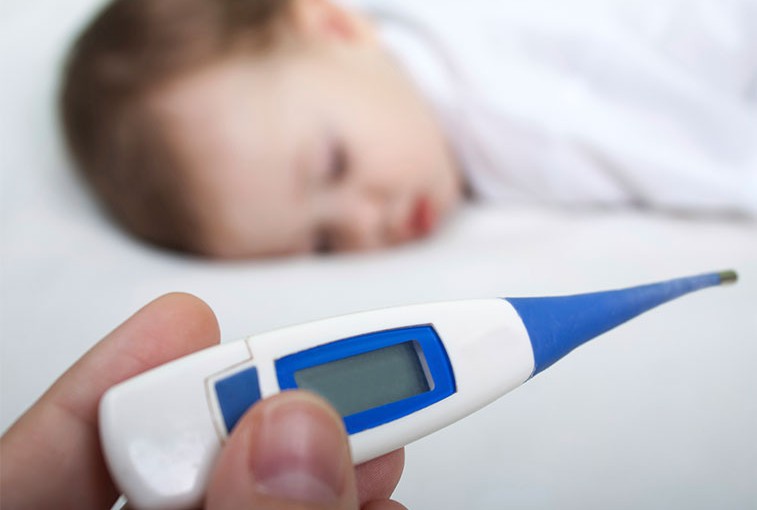It’s 5 a.m., and you hear “THAT” cry over the baby monitor. You touch her head, and it feels warm to you, but she always seems warm when sleeping. Can she go to child care, or do you need to call in your backup (again!!). You need to check her temperature but what’s the best way to do it? Rectal? Under the arm? Do I add or subtract a degree? What number is considered a true fever?
We’ve all been there. Below are some helpful guidelines about how to check your child’s temperature. Touching a baby’s forehead can give you a sense of fever but can’t tell you how high. Using a thermometer is the best way to get an accurate measurement. Remember though, the number on the thermometer does not tell the whole story. Other symptoms of illness can help you and your doctor decide on appropriate management.
A fever is considered any measurement greater than 100.4 degrees. In infants less than 3 months of age, a fever can be a sign of serious infection and requires a call to the provider. For kids of any age, please also take into account other signs of illness like difficulty breathing, listlessness, prolonged vomiting or diarrhea or fevers lasting three days. These also warrant a call or visit to a provider.
Rectal temperature
For the most accurate reading, the American Academy of Pediatrics recommends taking a temperature rectally on infants and children up to 3 years of age. The following instructions are from one of my favorite the websites, healthychildren.org.
- Clean the end of the thermometer with rubbing alcohol or soap and water. Rinse it with cool water. Do not rinse it with hot water.
- Put a small amount of lubricant, such as petroleum jelly, on the end.
- Place your child belly down across your lap or on a firm surface. Hold him by placing your palm against his lower back, just above his bottom. Or place your child face up and bend his legs to his chest. Rest your free hand against the back of the thighs.
- With the other hand, turn the thermometer on and insert it 1/2 inch to 1 inch into the anal opening. Do not insert it too far. Hold the thermometer in place loosely with two fingers, keeping your hand cupped around your child’s bottom. Keep it there for about 1 minute, until you hear the “beep.” Then remove and check the digital reading.
- Be sure to label the rectal thermometer so it’s not accidentally used in the mouth.
Temporal artery
A temporal artery thermometer (which is used on the side of the forehead) is also quite accurate, and less intrusive.
Axillary (armpit)
Temperature under the armpit (axillary) can also be used but is less informative and can vary from the true level by quite a bit. It would be used more for screening, or a quick estimate. We do not recommend adding a degree when measuring temperature this way.
Other methods
We do not recommend the use of skin strips placed on the forehead. These are simply not accurate. Ear thermometers are popular, but are less accurate in young children because they require careful positioning in a tiny ear canal.
…
Posted In Children's, Health Information
